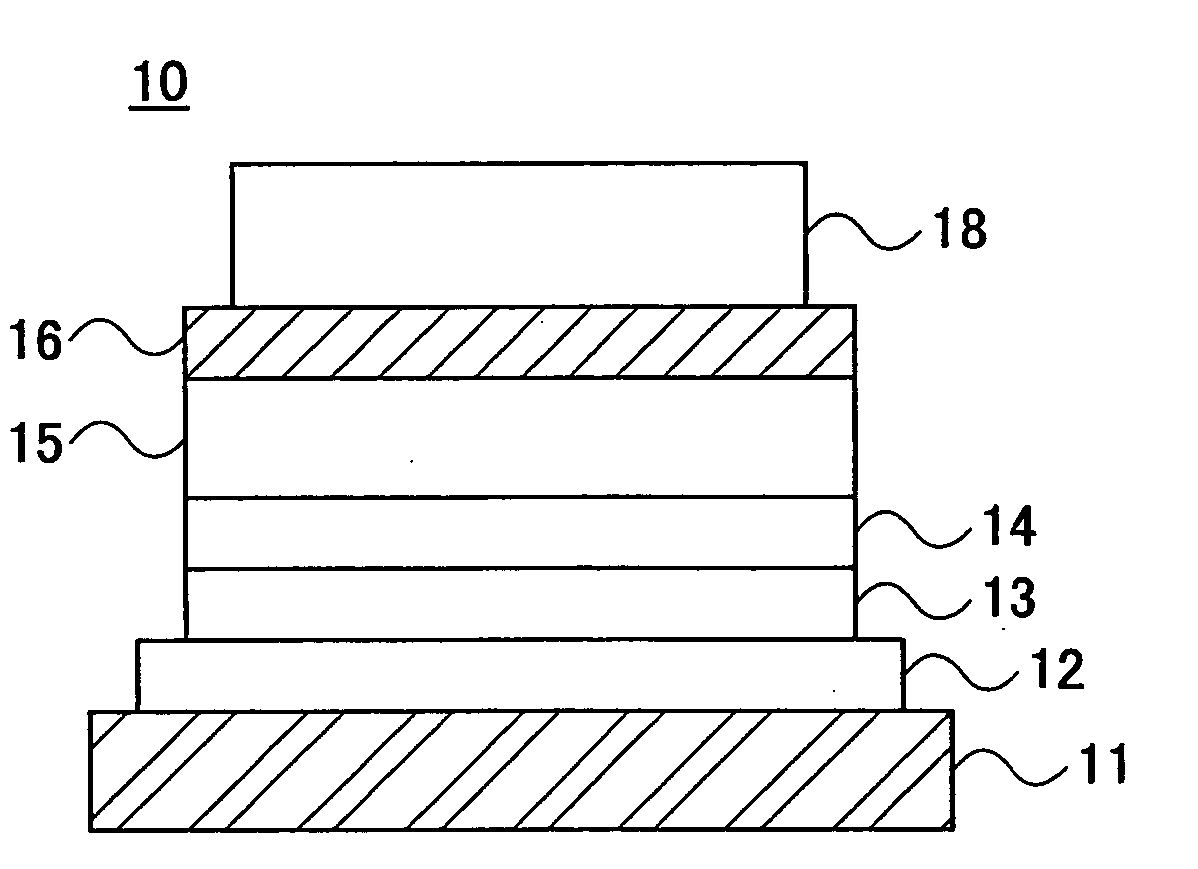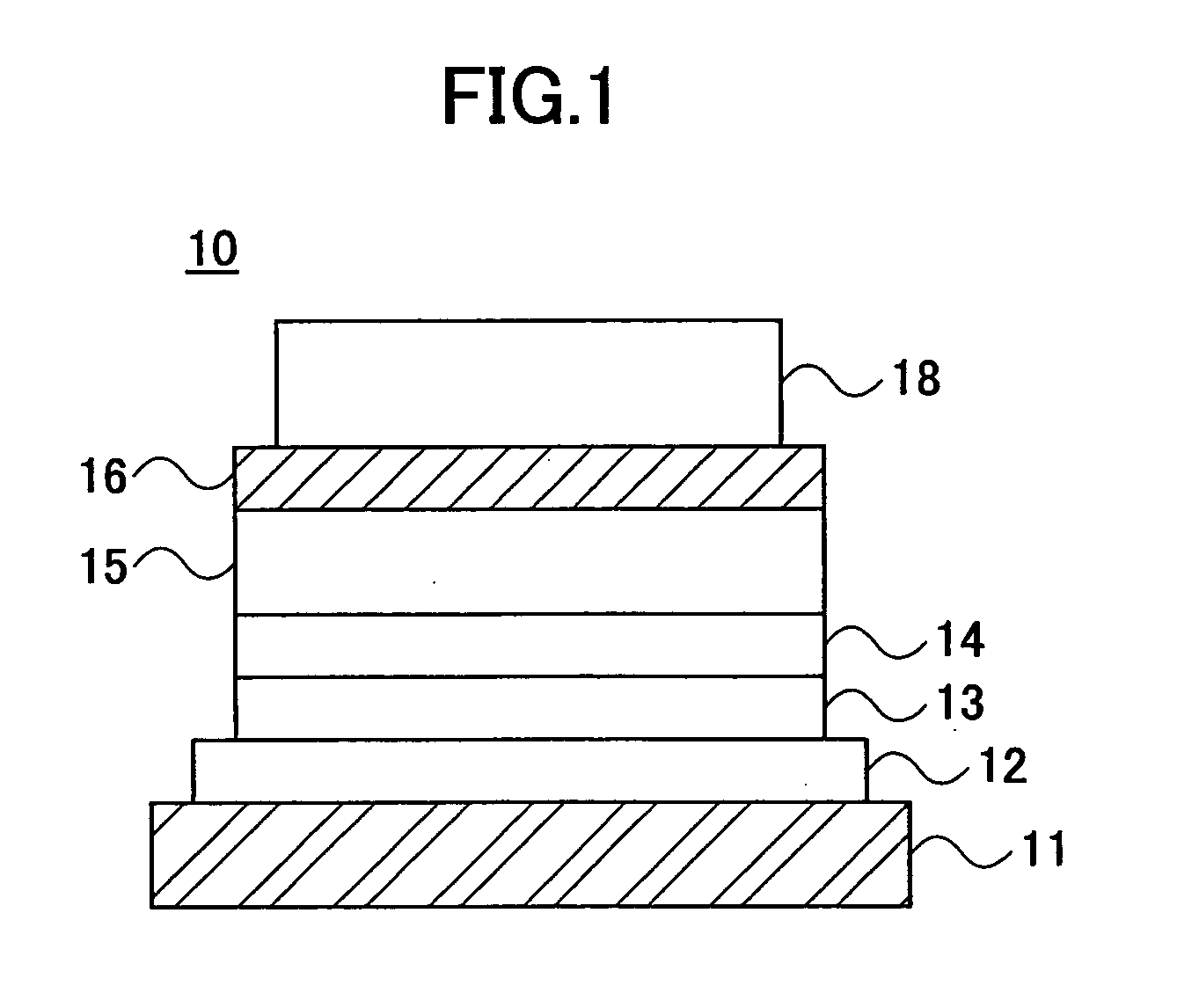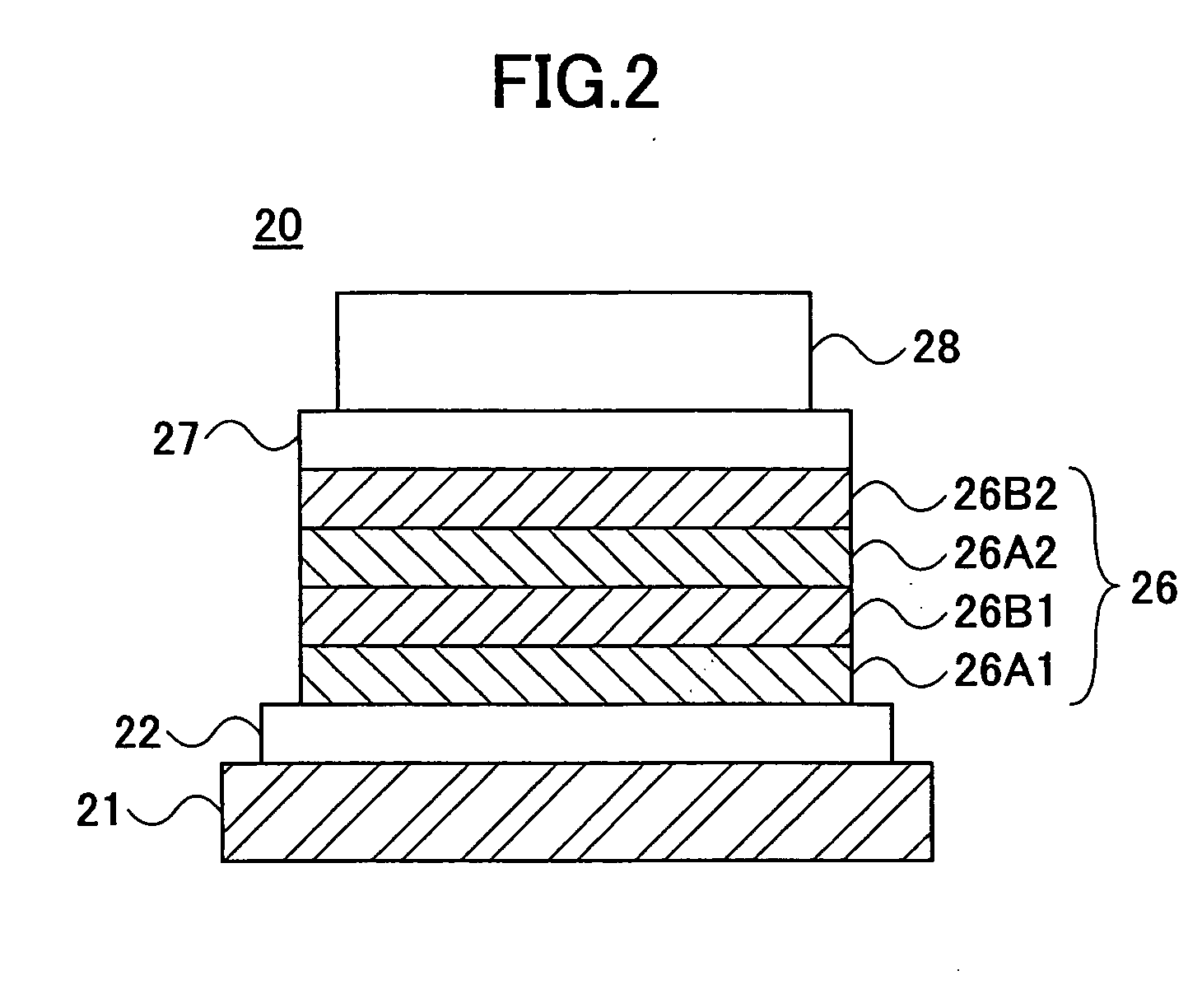Organic electroluminescence device and organic electroluminescence display
- Summary
- Abstract
- Description
- Claims
- Application Information
AI Technical Summary
Benefits of technology
Problems solved by technology
Method used
Image
Examples
first embodiment
(First Embodiment)
[0043] Embodiments of the present invention of an organic EL device are described with reference to the accompanying drawings.
[0044] FIG.4 is a cross-sectional view showing an organic EL device according to an embodiment of the present invention. FIG.5 is an example of an energy diagram of an organic EL device according to the embodiment shown in FIG.4. In FIG.5, “Ea” indicates electron affinity, “Eg” indicates energy gap, and “Ip” indicates ionization potential. With reference to FIGS. 4 and 5, according to this embodiment, an organic EL device 30 has a transparent substrate 31, an anode 32, a hole injection layer 33, a hole transport layer 34, a luminescent layer 35, an electron transport multilayered body 36, a cathode-side electron transport layer 37, and a cathode 38 which are formed in that order on the substrate 31.
[0045] For example, a transparent insulating substrate such as glass or quartz, a semiconductor substrate such as Si, a film such as PET or PEN...
example 1
[0069] An anode with a thickness of 150 nm is formed on a glass substrate by a sputtering method with use of ITO, and is subject to UV ozone processing in which the anode surface is irradiated with UV rays under an oxygen atmosphere for 20 minutes. Then, 2-TNATA (thickness 40 nm) serving as the hole injection layer, α-NPD (thickness 10 nm) serving as the hole transport layer, and TYG 201 (thickness 20 nm) serving as the luminescent layer, are formed in order.
[0070] Next, starting from TYE 704, the formation of a combination of TYE 704 (thickness 15 nm) and TYG 201 (thickness 15 nm), serving as the electron transport multilayered body, is repeated twice. Furthermore, a single layer of TYE 704 (thickness 20 nm) is formed on the electron transport multilayered body, and the cathode formed of LiF / Al is last formed.
[0071] In the organic EL device in this example, a green luminescence is observed in a case where voltage is no less than 3 V. When voltage of 10 V is applied, luminance of ...
second example
[0072] The organic EL element of this example is the same as that of the first example except for repeating the formation of a combination of TYE 704 (thickness 10 nm) and TYG 201 (thickness 10 nm) for three times.
[0073] In the organic EL device in this example, a green luminescence is observed in a case where voltage is no less than 3 V. When voltage of 10 V is applied, luminance of 1075 cd / m2 and a luminous efficiency of 9.70 cd / A are obtained.
PUM
 Login to View More
Login to View More Abstract
Description
Claims
Application Information
 Login to View More
Login to View More - Generate Ideas
- Intellectual Property
- Life Sciences
- Materials
- Tech Scout
- Unparalleled Data Quality
- Higher Quality Content
- 60% Fewer Hallucinations
Browse by: Latest US Patents, China's latest patents, Technical Efficacy Thesaurus, Application Domain, Technology Topic, Popular Technical Reports.
© 2025 PatSnap. All rights reserved.Legal|Privacy policy|Modern Slavery Act Transparency Statement|Sitemap|About US| Contact US: help@patsnap.com



